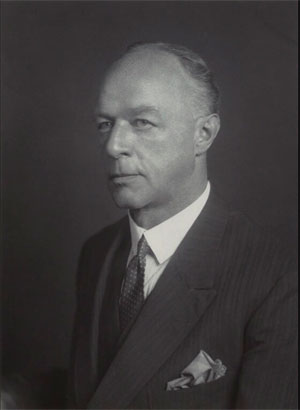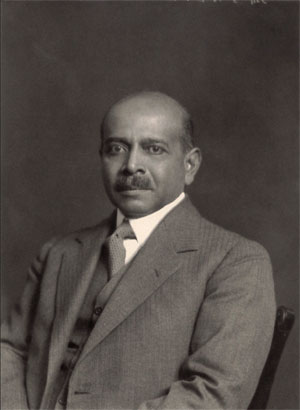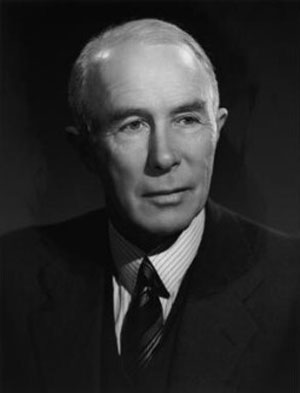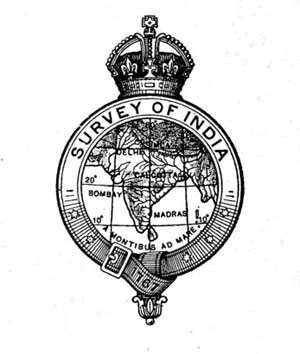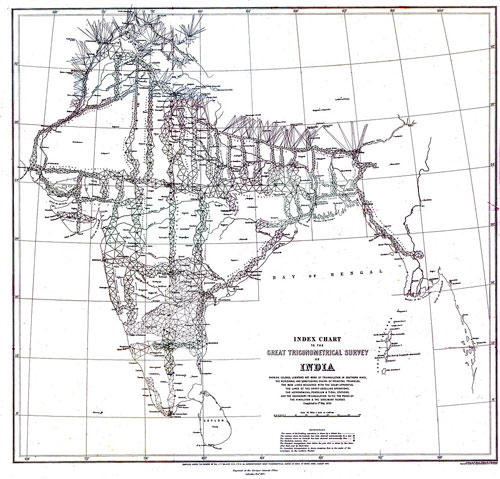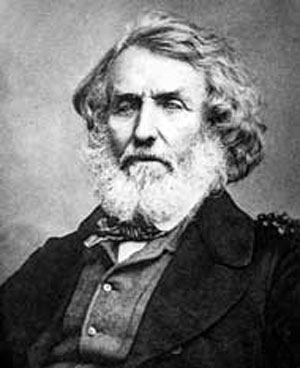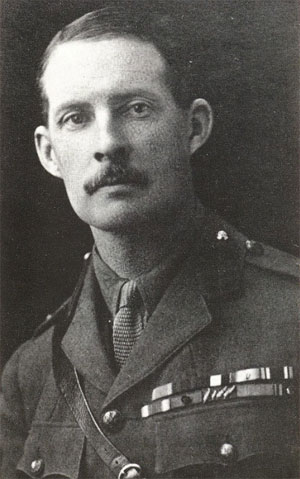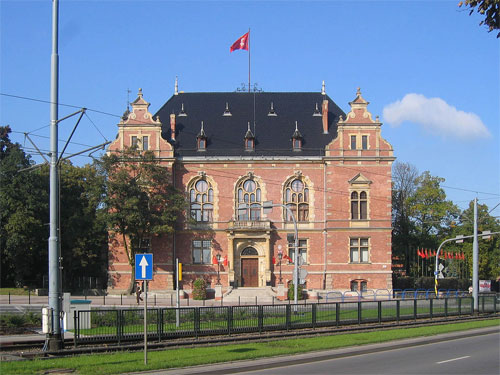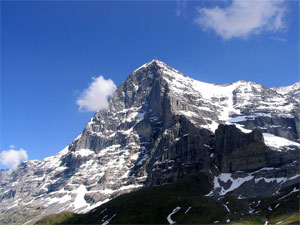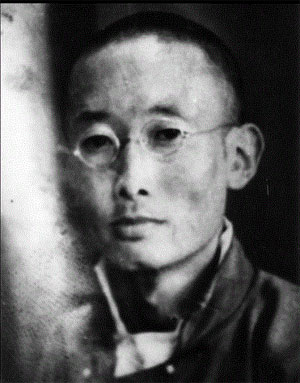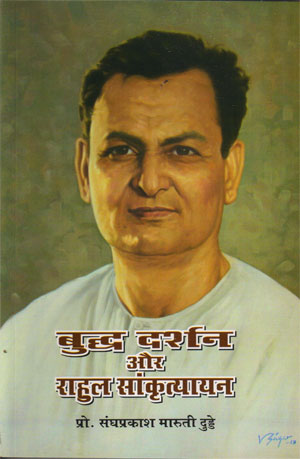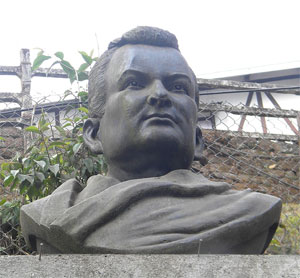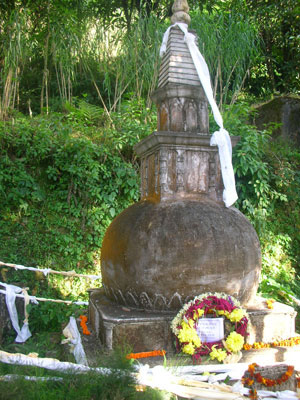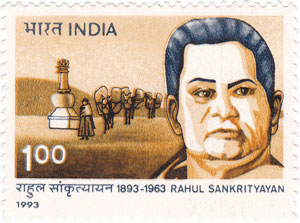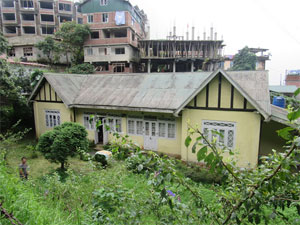Arya Samajby Wikipedia
Accessed: 2/3/20
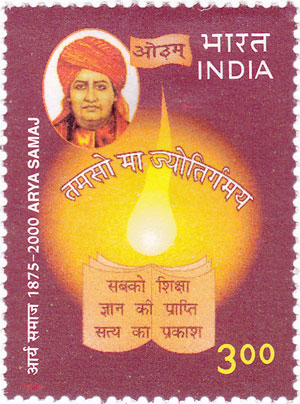
Arya Samaj
Arya Samaj 2000 stamp of India.jpgA 2000 stamp dedicated to Arya Samaj
Motto: "कृण्वन्तो विश्वमार्यम्" Make the world noble!
Formation: 10 April 1875 (144 years ago), Bombay, Bombay Presidency, British India (present-day Mumbai, Maharashtra, India)
Founder:
Dayananda SaraswatiType: Religious organisation
Legal status: Foundation
Purpose: Educational, Religious studies, Spirituality, Social Reforms
Headquarters: New Delhi, Delhi, India
Coordinates 26.4499°N 74.6399°ECoordinates: 26.4499°N 74.6399°E
Area served
Worldwide
Official language: Hindi
Main organ: श्रीमती परोपकारिणी सभा – Shreemati Paropkarini Sabha
Affiliations: Indian
Website
http://www.thearyasamaj.orgArya Samaj (Sanskrit: आर्य समाज, IAST: ārya samāja; "Noble Society") is a monotheistic Indian Hindu reform movement that promotes values and practices based on the belief in the infallible authority of the Vedas. The samaj was founded by the sannyasi (ascetic) Dayanand Saraswati on 10 April 1875.[1] Members of the Arya Samaj believe in one God and reject the worship of idols.[2]
Arya Samaj was the first Hindu organization to introduce proselytization in Hinduism.[3] [4]FoundationThe Arya Samaj was established in Bombay on 10 April 1875 by
Dayananda Saraswati (born "Mool Shankar" in Kathiawar, Gujarat 1824 – died Ajmer, 1883)[5]
An alternative date for the foundation of the samaj is 24 June 1877 because it was then, in Lahore when the samaj became more than just a regional movement based in Punjab.[6]
Vedic schoolsBetween 1869 and 1873, Dayanand began his efforts to reform orthodox Hinduism in India. He established Gurukul (Vedic schools) which emphasised Vedic values, culture, Satya (virtue) and Sanatana Dharma (the essence of living). The schools gave separate educations to boys and girls based on ancient Vedic principles. The Vedic school system was also to relieve Indians from the pattern of a British education.[7]The first Vedic school was established at Farrukhabad in 1869.[8] Fifty students were enrolled in its first year. This success led to the founding of schools at Mirzapur (1870), Kasganj (1870), Chhalesar (Aligarh) (1870) and Varanasi (1873).
At the schools, students received all meals, lodging, clothing and books free of charge. The discipline was strict. Students were not allowed to perform murti puja (worship of sculpted stone idols). Rather,
they performed Sandhyavandanam (meditative prayer using Vedic mantras with divine sound) and agnihotra (making heated milk offering twice daily).
The study of Sanskrit scriptural texts which accepted the authority of the Vedas were taught. They included the Vedas, Upanishads, Aranyaka, Kashika, Nirukta, Mahabhasya, Ashtadhyayi, Darshanas."The Light of Truth" lecture seriesAfter visiting Calcutta, Dayanand's work changed. He began lecturing in Hindi rather than in Sanskrit. Although Sanskrit garnered respect, in Hindi, Dayanand reached a much larger audience. His ideas of reform began to reach the poorest people.
In Varanasi, after hearing Dayanand speak, a local government official called Jaikishen Das encouraged Dayanand to publish a book about his ideas. From June to September 1874, Dayanand dictated a series of lectures to his scribe, Bhimsen Sharma. The lectures recorded Dayanand's views on a wide range of subjects. They have published in 1875 in Varanasi with the title Satyarth Prakash ("the light of truth").
New samajWhile his manuscript for Satyarth Prakash was being edited in Varanasi, Dayanand received an invitation to travel to Bombay. There, he was to debate representatives of the Vallabhacharya sect. On 20 October 1874, Dayanand arrived in Bombay. The debate, though well publicized, never took place. Nonetheless, two members of the Prarthana Samaj approached Dayanand and invited him to speak at one of their gatherings. He did so and was well received. They recognized Dayanand's desire to uplift the Hindu community and protect Hindus from the pressures to convert to Christianity or Islam. Dayanand spent over one month in Bombay and attracted sixty people to his cause. They proposed founding a new samaj with Dayanand's ideas as its spiritual and intellectual basis.
Ahmedabad debatesOn 11 December 1874, Dayanand arrived in Ahmedabad, Gujarat on the invitation of Gopal Hari Deshmukh. There, he debated with interested parties.
Rajkot Arya SamajOn 31 December 1874, Dayanand arrived in Rajkot, Gujarat, on the invitation of Hargovind Das Dvarkadas, the secretary of the local Prarthana Samaj. He invited topics of discourse from the audience and spoke on eight. Again, Dayanand was well received and the Rajkot group elected to join his cause. The Samaj was renamed Arya Samaj (Society of Nobles). Dayanand published a list of twenty-eight rules and regulations for the followers. After leaving Rajkot, Dayanand went to Ahmedabad but his audience at a meeting on 27 January 1875, did not elect to form a new Arya Samaj. Meanwhile, the Rajkot group had become in a political row.
Bombay Arya Samaj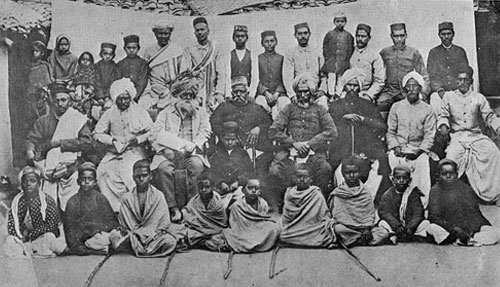 A meeting of the Arya Samāj for investing boys with the sacred thread[9]
A meeting of the Arya Samāj for investing boys with the sacred thread[9]On his return to Bombay, Dayanand began a membership drive for a local Arya samaj and received one hundred enrollees. On 7 April 1875,Bombay Arya Samaj was established. Dayanand himself enrolled as a member rather than the leader of the Bombay group. The Samaj began to grow.[10]
After DayanandDayanand died in 1883. The Arya Samaj continued to grow, especially in Punjab.
The early leaders of the Samaj were Pandit Lekh Ram (1858 – 1897) and Swami Shraddhanand (Mahatma Munshi Ram Vij) (1856 – 1926). Some authors claim that the activities of the Samaj led to increased antagonism between Muslims and Hindus.[11] Shraddhanand led the Shuddhi movement that aimed to bring Hindus who had converted to other religions back to Hinduism.[12]
In 1893, the Arya Samaj members of Punjab were divided on the question of vegetarianism. The group that refrained from eating meat were called the "Mahatma" group and the other group, the "Cultured Party".[13]
In the early 1900s, the Samaj (or organizations inspired by it such as Jat Pat Todak Mandal) campaigned against caste discrimination.[14] They also campaigned for widow remarriage and women's education.[15] The samaj also established chapters in British colonies with an Indian diaspora such as South Africa, Fiji, Mauritius, Suriname, Guyana and Trinidad and Tobago.[16]
Prominent Indian Nationalists such as Lala Lajpat Rai belonged to Arya Samaj and were active in its campaigning.[17] Bhagat Singh's grandfather followed Arya Samaj, which had a considerable influence on Bhagat Singh.[18] The British colonial government in the early part of 20th century viewed the Samaj as a political body. Some Samajis in government service were dismissed for belonging to the Samaj[19]In the 1930s, when the Hindu Nationalist group, the Rashtriya Swayamsevak Sangh grew in prominence in Northern India, they found support in the Arya Samaj of Punjab.[20]
Arya Samaj in PunjabIn Punjab, the Arya Samaj was opposed by the Ahmadiyya movement which provided the Samaj one of its most aggressive opponents from among the various Muslim groups and whose founder Mirza Ghulam Ahmad was extensively involved in theological disputations with Samaj leaders, most notably with Pandit Lekh Ram.[21][22] It was also opposed by the Sikh dominated Singh Sabha, the forerunner of the Akali Dal.[23]
Arya Samaj in GujaratThe Arya Samaj of Gujarat members were missionaries from Punjab who had been encouraged to move to Gujarat to carry out educational work amongst the untouchable castes by the maharaja, Sayajirao Gaekwad III. The Gujarat Samaj opened orphanages.
In 1915, the samaj lost its following to Mahatma Gandhi.[24]Reconversion in MalabarIn 1921, during a rebellion by the Muslim Moplah community of Malabar Indian newspapers reported that a number of Hindus were forcibly converted to Islam. The Arya Samaj extended its efforts to the region to reconvert these people back to Hinduism through Shuddhi ceremonies. [25]:p.141–152
Views of Orthodox Hindu on the SamajThe then Shankaracharya of Badrinath math in 1939 in a letter to the archbishop of Canterbury, called Arya Samajis Un-Hindu. He also criticized the samaj efforts at converting Christians and Muslims.[26]
Arya Samaj in Hyderabad stateA branch of Arya Samaj was established at Dharur in Beed district of Hyderabad state, the largest princely state during British colonial rule.
Keshav Rao Koratkar was the president of the organization until 1932. During his tenure, the Samaj, established schools and libraries throughout the state. Although a social and religious organization, the Samaj activities assumed a great political role in resisting the government of the Nizam during 1930s. In 1938-1939, Arya Samaj teamed up with the Hindu Mahasabha to resist the Nizam government through Satyagraha. The Nizam government responded by raiding and desecrating Arya samaj mandirs. The Samaj, in turn, criticized Islam and the Islamic rulers of the state. This widely increased the gulf between the Hindu and Muslim population of the state.[27][28]Language issueArya Samaj promoted the use of Hindi in Punjab and discouraged the use of Punjabi. This was a serious point of difference between the Sikhs, represented by the Shiromani Akali Dal group and the Arya Samaj. The difference was marked during the period immediately following the independence of India and the time of the Punjabi Suba movement (demand for a Punjabi speaking state).[29][30][31]
Humanitarian effortsArya Samaj was a charitable organisation. For example, donations were made to victims of the 1905 Kangra earthquake. The samaj campaigned for women's right to vote, and for the protection of widows.[32]
Contemporary Arya Samaj
Arya Samaj in IndiaArya Samaj schools and temples are found in almost all major cities and as well as in rural areas (esp in North region) of India. Some are authorised to conduct weddings. The Samaj is associated with the Dayanand Anglo Vedic (DAV) schools which number over two hundred.[33]
The former Indian prime minister Charan Singh, as a young man, was a member of Arya Samaj in Ghaziabad.
A branch of Arya Samaj was established in 2015 in Angul district in the state of Odisha[34]
Arya Samaj around the worldArya Samaj is active in countries including Guyana, Suriname, Trinidad and Tobago, Fiji, Australia,[35] South Africa,[36] Kenya,[37] Mauritius[38] and other countries where a significant Hindu diaspora is present.
Immigrants to Canada and the United States from South Asia, Eastern Africa, South Africa, and the Caribbean countries of set up Arya Samaj temples for their respective communities.[39] Most major metropolitan areas of United States have chapters of Arya Samaj.[40]
Core beliefs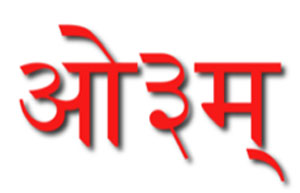 ओ३म् O3m (Aum), considered by the Arya Samaj to be the highest and most proper name of God.Members of the Arya Samaj believe in one almighty creator referred to with the syllable Aum as mentioned in the Yajur Veda (40:17). They believe the Vedas is an infallible authority. The Arya Samaj members reject other Hindu religious texts because they are not "revealed" works. For instance, they believe books like the Ramayana and the Mahabharata are legends of historical figures, and rejects them as reference to supreme beings and avatars. The members of Arya Samaj reject other scriptural works such as the Puranas, The Upanishads, the Bible, and the Quran.[41] They reject the worship of idols. The Arya Samaj promotes the equality of all human beings and the empowerment of women.
ओ३म् O3m (Aum), considered by the Arya Samaj to be the highest and most proper name of God.Members of the Arya Samaj believe in one almighty creator referred to with the syllable Aum as mentioned in the Yajur Veda (40:17). They believe the Vedas is an infallible authority. The Arya Samaj members reject other Hindu religious texts because they are not "revealed" works. For instance, they believe books like the Ramayana and the Mahabharata are legends of historical figures, and rejects them as reference to supreme beings and avatars. The members of Arya Samaj reject other scriptural works such as the Puranas, The Upanishads, the Bible, and the Quran.[41] They reject the worship of idols. The Arya Samaj promotes the equality of all human beings and the empowerment of women.The core beliefs of Arya Samaj are postulated below:[42]
1. The primeval cause of all genuine knowledge and all that is known by means of knowledge is God.
2. God is Truth-consciousness – Bliss personified, Formless, Omnipotent, Just, Merciful, Unborn, Infinite, Unchangeable, Beginningless, Incomparable, Support of all, Lord of all, Omnipresent, Internal, the regulator of all, Undecaying, Immortal, Fearless, Eternal, Holy, and creator of the Universe. He alone deserves worship.
3. The Vedas are repositories of all of true knowledge. It is the paramount duty of all Aryas to study and teach and to propound the Veda.4. We should be ever ready to imbibe truth and forsake untruth.
5. All acts should be done in accordance with Dharma, i.e. after deliberating upon what is truth and untruth.
6. The prime object of Arya Samaj is to do good to the whole world, i.e. to achieve physical, spiritual and social prosperity for all.
7. Our conduct towards all should be guided by love, by injunctions of Dharma and according to their respective positions.
8. One should dispel ignorance and promote knowledge.
9. One should not be content with one's own prosperity only, but should consider the prosperity of all as his own prosperity.
10. All human beings should abide by the rules concerning social or everyone's benefit, while everyone should be free to follow any rule beneficial for him/her.Practices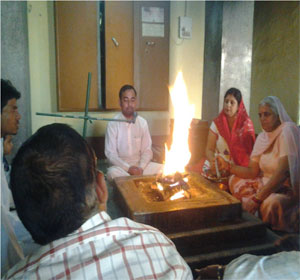 Agnihotra by Arya SamajThe Arya Samaj members consider the Gayatri Mantra,[43] as the most holy mantra and chant it periodically, do the meditation known as "Sandhya" and make offering to the holy fire (havan).
Agnihotra by Arya SamajThe Arya Samaj members consider the Gayatri Mantra,[43] as the most holy mantra and chant it periodically, do the meditation known as "Sandhya" and make offering to the holy fire (havan).[44] The havan can be performed with a priest for special occasions or without a priest for personal worship. The havan is performed as per the havan pustika, usually a simplified guide to do havan, having mantras for general or special occasions. The priest is generally a Vedic scholar from the local Arya Samaj Mandir or Gurukul. Sometimes elder members of family or neighbours can also perform the havan acting as a purohit. The host is known as the "Yajmana". The priest can be called an "Acharya", "Swami ji" or "Pandit Ji" depending upon his scholarly status and local reputation. It is customary to give a nominal "dakshina" to the priest after havan, although in Arya Samaj it is more symbolic and the priest does not state any sum. The sum is decided by the host's capability and status but is still a small amount.[45]
Members celebrate Holi (the start of spring) and Diwali (a harvest festival and the victory of good over evil).
Arya Samaj advocates a lacto-vegetarian diet and in particular, the eating of beef is strictly prohibited.After a death, Arya Samajis will often conduct a haven and collect the ashes on the fourth day.[46]
Diwali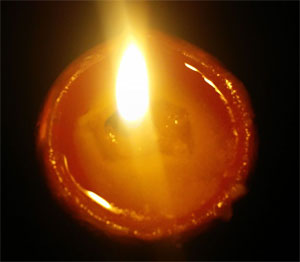 Diya with one wick.
Diya with one wick.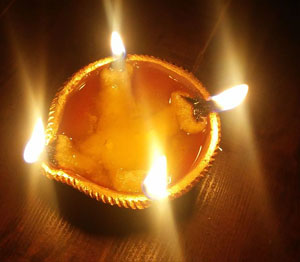 Diya with four wicks, pointing in each direction (N, W, S, E).The Arya Samaj celebration of Diwali is typified by the celebration in Suriname. The festival celebrates the victory of good over evil. A vegetarian fast is kept. The Gayatri mantra is spoken while oil lamps are lit.
Diya with four wicks, pointing in each direction (N, W, S, E).The Arya Samaj celebration of Diwali is typified by the celebration in Suriname. The festival celebrates the victory of good over evil. A vegetarian fast is kept. The Gayatri mantra is spoken while oil lamps are lit. One Diya lamp, which is of larger size has two wicks crossed to produce four lights, one in each direction and is lit first. The smaller lamp has one wick. The recitation of the Gayatri mantra occurs in front of a fire altar lit with sandalwood. A lamp is kept in every room except the bathroom and restroom. More lamps can be lit, which can be placed arbitrarily in the yard, living room and so on.[47]
HoliHoli is celebrated as the conclusion of winter and the start of spring to sow the land and hope for a good harvest. This day is marked by colors and songs (Chautal). It does not require specific prayer or fasting, however, some people keep a vegetarian fast on this day. The Arya Samaj does not associate Holi with a particular deity such as Vishnu or Shiva and in comparison to some interpretations of the festival, the Arya Samaj version in more sober and is as per the 4 Vedas.[48][45]
See also• Arya Samaj in Fiji
• Arya Samaj in Ghana
• Arya Samaj in Guyana
• Arya Samaj in Kenya
• Arya Samaj in Mauritius
• Arya Samaj in Mozambique
• Arya Samaj in Singapore
• Arya Samaj in South Africa
• Arya Samaj in Suriname
• Arya Samaj in Tanzania
• Arya Samaj in Trinidad and Tobago
• Arya Samaj in Thailand
• Arya Samaj in Uganda
• Hindu reform movements
References1. Hastings J. and Selbi J. (Ed.) Encyclopedia of Religion and Ethics Kessinger 2003 part 3. p. 57. ISBN 0-7661-3671-X
2. Thursby, G. R. (1975). Hindu-Muslim relations in British India : a study of controversy, conflict, and communal movements in northern India 1923–1928. Leiden: Brill. p. 3. ISBN 9789004043800.
3. Thursby, G. R. (1977). Hindu-Muslim relations in British India : a study of controversy, conflict, and communal movements in northern India 1923–1928. Leiden: Brill. p. 3. ISBN 9789004043800.
4. Gyanendra Pandey (25 March 2013). A History of Prejudice: Race, Caste, and Difference in India and the United States. Cambridge University Press. p. 64. ISBN 978-1-107-02900-2.
5. E News Aryasamaj website 2 March 2010. Accessed 3 February 2017
6. Dayanand Saraswati Himalaya publishing documents.
7. Sharma R. N and Sharma R. K. Problems of Education in India Atlantic 2006 p. 356 ISBN 817156612X
8. Saxena G. S. Arya Samaj movement in India, 1875–1947 Commonwealth publishers 1990 p. 47
9. Russell R. V. The Tribes and Castes of the Central Provinces of India 1916 vol. 1
10. "The Arya Samaj - Arya Samaj Mumbai".
http://www.thearyasamaj.org. Retrieved 25 January 2020.
11. Barrier, Norman G. (1967). "The Arya Samaj and Congress Politics in the Punjab, 1894-1908". The Journal of Asian Studies. 26 (3): 363–379. doi:10.2307/2051414. JSTOR 2051414.
12. Nair N. Changing Homelands: Hindu Politics and the Partition of India. Permanent Black, New Delhi 2011. p. 53 ISBN 9780674057791
13. "Punjab" Imperial Gazetteer of India 1909. vol. 20 p. 291. Accessed 2 October 2014.
14. Rajivlochan M. Coping with Exclusions the Non-Political Way in Judge P. S. Mapping Social Exclusion in India: Caste, Religion and Borderlands Cambridge University Press 2014 p. 82 – 83. ISBN 1107056098
15. Kishwar M. (26 April 1986). "Arya Samaj and Women's Education: Kanya Mahavidyalaya, Jalandhar". Economic and Political Weekly. 21 (17): WS9–WS24. JSTOR 4375593.
16. Vertovec S. The Hindu Diaspora: Comparative Patterns Routledge, London 2000. pp. 29, 54 and 69. ISBN 9780415238939.
17. Rai L. L. The Arya Samaj: an Account of its Aims, Doctrine and Activities, with a Biographical Sketch of the Founder Longman, London 1915. ISBN 978-81-85047-77-5
18. Twitter hails Bhagat Singh on his 112th birth anniversary, Mid-Day, 27 September 2019.
19. Kumar, Raj (editor) (2004). Essays on social reform movements. New Delhi: Discovery Pub. House. pp. 2–4. ISBN 9788171417926.
20. Jaffrelot C. The Hindu Nationalist Movement and Indian Politics: 1925 to the 1990s. Penguin Books, New Delhi 1999. pp. 67 and 68. ISBN 9780140246025.
21. Kenneth W. Jones (1976). Arya Dharm: Hindu Consciousness in 19th-century Punjab. University of California Press. p. 148. ISBN 0-520-02920-8.
22. Kenneth W. Jones (1989). Socio-Religious Reform Movements in British India. Cambridge University Press. pp. 116–18. ISBN 9780521249867.
23. Jones, Kenneth W. (1973). "Ham Hindu Nahin: Arya-Sikh Relations, 1877-1905". The Journal of Asian Studies. 32 (3): 457–475. doi:10.2307/2052684. JSTOR 2052684.
24. Hardiman D. Purifying the nation, the Arya Samaj in Gujarat 1895–1930 Indian Economic and Social History Review 2000. 44:1 p. 41 – 65.
25. Thursby G. R. Hindu-Muslim relations in British India: a study of controversy, conflict, and communal movements in northern India 1923–1928 Brill, Leiden, 1975. ISBN 9789004043800
26. Lucien D. Benichou (2000). From Autocracy to Integration: Political Developments in Hyderabad State, 1938-1948. Orient Blackswan. p. 79. ISBN 978-81-250-1847-6.
27. P. V. Kate (1987). Marathwada Under the Nizams, 1724-1948. Mittal Publications. pp. 51, 64–66. ISBN 978-81-7099-017-8.
28. Lucien D. Benichou (2000). From Autocracy to Integration: Political Developments in Hyderabad State, 1938-1948. Orient Blackswan. p. 79. ISBN 978-81-250-1847-6.
29. Lamba K. G. Dynamics of Punjabi Suba Movement Deep and Deep 1999. p. 90 ISBN 9788176291293Accessed 3 February 2017.
30. Chopra R. Love Is The Ultimate Winner Partridge, India 2013. p. 9072. ISBN 9781482800050 Accessed 3 February 2017.
31. Grewal J. S. The Sikhs of the Punjab Cambridge University Press 1998. p. 187 ISBN 9780521637640Accessed 3 February 2017.
32. Sharma S. C. Punjab, the Crucial Decade Atlantic 1987. p. 133.
33. Arya Samaj Arya Samaj website.
34. "Archived copy". Archived from the original on 6 January 2016. Retrieved 26 November 2018.
35. Arya Samaj Queensland website. Accessed 3 February 2017.
36. Lal V. and Vahed G. (2013). "Hinduism in South Africa: Caste, Ethnicity, and Invented Traditions, 1860–Present" (PDF). J Sociology Soc Anth. 4 (1–2): 1–15. doi:10.1080/09766634.2013.11885578.
37. Ombongi K. S. Hindu socio-religious organizations in Kenya: a case study of Arya Samaj, 1903–1978University of Nairobi 1993.
38. Eisenlohr P. Little India: Diaspora, Time, and Ethnolinguistic Belonging in Hindu Mauritius University of California Press, Berkeley, California 2006. p. 36. ISBN 978-0-520-24879-3
39. Coward H. Hindus in Canada, the Third National Metropolis Conference Archived 30 December 2013 at the Wayback Machine Centre of Excellence for Research on Immigration and Integration in the Metropolis 1999.
40. Arya Pratinidhi Sabha America Archived 31 December 2013 at the Wayback Machine Arya Samaj website. Accessed 30 December 2013.
41. Kenneth W. Jones (1976). Arya Dharm: Hindu Consciousness in 19th-century Punjab. University of California Press. pp. 139–143. ISBN 978-0-520-02920-0.
42. "10 Principles of Arya Samaj - English & Hindi". Arya Samaj India. 5 September 2015. Retrieved 21 April2019.
43. Naidoo T. The Arya Samaj movement in South Africa Motilal Banarsidass, Delhi 1992 first edition. p.30 and 71. ISBN 8120807693
44. Morgan, Kenneth W. (Editor); Sharma, D.S.; et al. (1987). The Religion of the Hindus (Reprint. ed.). Delhi: M. Banarsidass. p. 199. ISBN 978-8120803879. Retrieved 26 July 2017.
45. Jump up to:a b Jones K. W. Arya Dharm: Hindu Consciousness in 19th-century Punjab University of California Press, 1976. p. 95. ISBN 0520029208
46. Firth S. Dying, death and bereavement in a British Hindu community Peeters, Leuven 1997. p. 89. ISBN 9789068319767
47. Arya Dharm: Hindu Consciousness in 19th-Century Punjab Paperback – January 1, 2006Jones, Kenneth W. (1976). Arya dharm : Hindu consciousness in 19th-century Punjab. New Delhi: Manohar. ISBN 978-8173047091. Retrieved 30 November 2016.
48. Dalal R. The Religions of India: A Concise Guide to Nine Major Faiths Penguin Books India, 2010. p. 148 ISBN 0143415174
Further reading• Chamupati M. A. (2001) Ten Commandments of Arya Samaj New Delhi: D.A.V. Publications.
• Jordens J. T. F. (1978) Dayanada Saraswati Oxford University Press, Delhi.
• Madhu Kishwar, "The Daughters of Aryavarta: Women in the Arya Samaj movement, Punjab." Chapter in Women in Colonial India; Essays on Survival, Work and the State, edited by J. Krishnamurthy, Oxford University Press, 1989.
• Rai L. (1915) The Arya Samaj: an Account of its Aims, Doctrine and Activities, with a Biographical Sketch of the Founder D.A.V. College Managing Committee, New Delhi ISBN 978-81-85047-77-5.
• Rai L. (1993) A History of the Arya Samaj New Delhi ISBN 81-215-0578-X.
• Ruthven M. (2007) Fundamentalism: a Very Short Introduction Oxford University Press ISBN 978-0-19-921270-5.
• Sharma J. M. (1998) Swami Dayanand: a Biography USB, India ISBN 81-7476-212-4.
• Sethi R. "Rashtra Pitamah Swami Dayanand Saraswati" M R Sethi Educational Trust, Chandigarh.
• Upadhyaya G. P. (1954) The Origin, Scope and Mission of the Arya Samaj Arya Samaj.
• Shastri V. (1967) The Arya Samaj Sarvadeshik Arya Pratinidhi Sabha.
• Pandey D. (1972) The Arya Samaj and Indian Nationalism, 1875–1920 S. Chand.
• Pandit S. (1975) A Critical Study of the Contribution of the Arya Samaj to Indian Education Sarvadeshik Arya, Pratinidhi Sabha.
• Vedalanker N. and Somera M. (1975) Arya Samaj and Indians Abroad Sarvadeshik Arya Pratinidhi Sabha.
• Vable D. (1983) The Arya Samaj: Hindu Without Hinduism VikasISBN 0-7069-2131-3.
• Sharma S. K. (1985) Social Movements and Social Change: a Study of Arya Samaj and Untouchables in PunjabB.R. Publishing.
• Yadav K. C. and Arya K. S. (1988) Arya Samaj and the Freedom Movement: 1875–1918 Manohar Publications. ISBN 81-85054-42-8.
• Saxena G. S. (1990) Arya Samaj Movement in India, 1875–1947 Commonwealth Publishers. ISBN 81-7169-045-9.
• Sethi R. (2009) Rashtra Pitamah, Swami Dayanand Saraswati M R Sethi Educational Trust, Chandigarh
• Chopra R. M. (2009) Hinduism Today
• Jamnager A. S. and Pandya D. Aryasamaj Ke Stambh A. S. Jamnager's website.
• Jones K. Arya Dharm: Hindu Consciousness in 19th-Century Punjab
• Dayananda, S., & Bharadwaja, C. (1932). Light of truth, or, An English translation of the Satyartha prakasha: The well-known work of Swami Dayananda Saraswati. Madras: Arya Samaj.
• Swami Shraddhananda, . (1926). Hindu sangathan: Saviour of the dying race. Delhi: Shraddhananda.
• Swami Śraddhānanda, . (1984). Inside the Congress: A collection of 26 articles. New Delhi: Dayanand Sansthan.
External links• Official website
